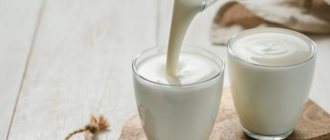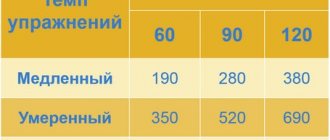When you start a diet or healthy eating, you immediately begin to wonder how many calories are in the foods that you eat and should eat every day.
This is where the most interesting thing opens up, since the usual diet turns out to be too rich in calories. Indeed, in normal times, rarely does anyone eat steamed food, boiled vegetables, low-fat meat and other dishes that, as previously thought, were impossible to make tasty. How do you most often cook salmon?
- I bake 60%, 192 votes
192 votes 60%192 votes - 60% of all votes
- On the grill 14%, 44 votes
44 votes 14%
44 votes - 14% of all votes
- Salt 11%, 36 votes
36 votes 11%
36 votes - 11% of all votes
- On a grill pan 9%, 29 votes
29 votes 9%
29 votes - 9% of all votes
- In a slow cooker 4%, 13 votes
13 votes 4%
13 votes - 4% of all votes
- Varya 1%, 4 votes
4 votes 1%
4 votes - 1% of all votes
Total votes: 318
Votes: 293
13.01.2020
- I bake 60%, 192 votes
192 votes 60%192 votes - 60% of all votes
- On the grill 14%, 44 votes
44 votes 14%
44 votes - 14% of all votes
- Salt 11%, 36 votes
36 votes 11%
36 votes - 11% of all votes
- On a grill pan 9%, 29 votes
29 votes 9%
29 votes - 9% of all votes
- In a slow cooker 4%, 13 votes
13 votes 4%
13 votes - 4% of all votes
- Varya 1%, 4 votes
4 votes 1%
4 votes - 1% of all votes
Total votes: 318
Votes: 293
13.01.2020
×
You or from your IP have already voted.
Now everything has changed, healthy and tasty nutrition is increasingly finding common ground, and even boiled fish can turn out to be a delicacy if prepared correctly. In this material we will take a closer look at fish, which is often offered in diets. More precisely, let's talk about the calorie content of salmon per 100 grams.
Dietary properties:
How many calories are in red fish, what dietary properties it has, all this is very interesting for those who are trying to lead a healthy lifestyle, monitor their health and figure. So we will try to answer these questions in the next article.
So here it is:
Fish is not inferior to meat in its nutritional and culinary qualities. Since ancient times, it has played an important role in human nutrition. It is eaten boiled, fried, stewed, baked. It is salted, smoked, dried, pickled.
In the northern regions of Siberia they eat stroganina - raw frozen sturgeon and whitefish. However, nutritionists do not recommend such a raw food diet, as it can lead to various helminthic diseases.
Fish is easily digested and well absorbed by the human digestive system. Compared to the meat of warm-blooded animals, it is digested faster. Thus, cod, trout or sturgeon remain in the stomach for 2 to 3 hours, while beef or chicken for 3 to 4 hours.
Fish dishes are widely used both in the daily diet and in dietary nutrition.
Red fish contains from 10 to 23% protein and from 0.2 to 30% fat. Its proteins are well balanced in their amino acid composition; they are as complete as the proteins of meat, eggs, and dairy products. They are characterized by a higher content of such an essential amino acid as methionine.
If we assume that a person needs 100 g of protein per day, of which approximately half should be proteins of animal origin, then the daily need for animal protein will be provided in excess by 250 g of fish fillet or 200–300 g of boiled fish. 100 g of boiled fish fillet contains as much protein as there is in a chicken egg or three glasses of milk.
The peculiarity of red fish fats is their high content of polyunsaturated fatty acids, in particular linoleic, linolenic, and arachidonic acids. Fats are rich in vitamins A and D. It contains many times more vitamin A than meat.
Of the mineral substances it contains phosphorus, potassium, calcium, sodium, magnesium. Iron, copper, zinc, iodine, bromine, and fluorine are present in small quantities in the tissues of fish, especially sea fish.
Chilled and frozen fish are most often used in medical nutrition. However, it is most useful when fresh, for preparing a variety of dishes. It is in it that the largest amount of biologically active substances, especially vitamins, is stored.
BZHU and KBZHU salmon per 100 grams
Everyone who has prepared dishes from this fish notes that salmon meat does not dry out and remains tender due to the large amount of fat. But fatty acids are unsaturated, so they are easily absorbed by the body.
Equally important is the fact that salmon is low in carbohydrates but high in protein.
However, it should be noted that the energy and nutritional value of this fish in fresh, salted, and fried form is different. Below we talk about the BZHU and KBZHU of salmon using different cooking methods.
Lightly salted
If salmon is salted in a weak salt solution, then the calorie content of 100 grams of the product will increase to 202.3 Kcal, which is 13.2% of the required norm. The same portion of lightly salted fish contains 22.5 g (24.46%) proteins, 12.5 g (18.66%) fats. There are no carbohydrates.
You should not eat lightly salted salmon too often, since the amount of salt in such fish still exceeds the daily norm, and this negatively affects your health.
Fresh
The energy value of 100 grams of such fish is significantly less than that of salted or fried fish: it is equal to 142 Kcal, or 9.26% of the daily value. The balance of fresh salmon BJU is characterized by the absence of carbohydrates, representing the ratio:
- proteins – 20 g (21.74%);
- fats – 6.3 g (9.4%);
The above indicators indicate that there are much less lipids in fresh salmon than in fish that is fried or salted.
The benefits of salmon for the body are determined by its high content of vitamins:
- 15.3% thiamine (B 1), providing carbohydrate, protein and lipid metabolism; regulating water-salt balance; stabilizing the functioning of the central nervous system;
- 13.9% riboflavin (B 2), which is involved in fat metabolism, normalizes the flow of bile, increases the body's resistance to stress, and improves visual functions;
- 12% tocopherol (E) – an antioxidant that slows down the aging process, normalizes reproductive functions, activates sperm production and maturation of germ cells;
- 47% PP vitamins that help convert carbohydrates into glucose.
Are you having trouble losing weight?
Answer 8 questions and find out why you can't lose weight.
Test for women
Test for men
Fried
If you fry salmon, then the calorie content of a 100-gram serving of such a dish will increase to 238 Kcal, that is, 15.48% of the required norm. The BJU ratio will also change:
| Organic matter | Grams | % of daily value |
| Squirrels | 24, 63 | 26, 74 |
| Fats | 14, 6 | 21, 79 |
| Carbohydrates | 0, 31 | 0, 21 |
Fried salmon is contraindicated if you are overweight or have gastrointestinal pathologies. It is better to boil, stew or steam the fish.
How many calories are in red fish?
Here's how much:
Naturally, the calorie content of red fish depends on the type and method of preparation.
Pay attention to this table:
Table of calorie content and nutritional value (BJU) per 100 grams:
| Red fish: | Bel, gr. | Fat, gr. | Angle, gr. | Cal, kcal. |
| Sevruga fresh | 17.0 | 11.8 | 0.0 | 160 |
| Beluga fresh | 21.0 | 0.7 | 0.0 | 147 |
| Beluga dried | 69.9 | 5.3 | 0.0 | 327 |
| Bester fresh | 21.0 | 0.7 | 0.0 | 147 |
| Fresh sturgeon | 16.4 | 10.9 | 0.0 | 163 |
| Boiled sturgeon | 17.7 | 12.0 | 0.0 | 179 |
| Fried sturgeon | 16.0 | 17.4 | 13.2 | 273 |
| The thorn is fresh | 16.4 | 10.9 | 0.0 | 164 |
| Fresh sterlet | 17.0 | 6.1 | 0.0 | 122 |
| Boiled sterlet | 17.5 | 2.0 | 0.0 | 88 |
| Baked sterlet | 17.3 | 3.3 | 0.8 | 142 |
| Fresh salmon | 19.9 | 13.6 | 0.0 | 201 |
| Boiled salmon | 19.8 | 9.0 | 0.5 | 153 |
| Fresh pink salmon | 20.5 | 6.5 | 0.0 | 142 |
| Boiled pink salmon | 22.9 | 7.8 | 0.0 | 168 |
| Fresh chum salmon | 22.0 | 5.6 | 0.0 | 138 |
| Boiled chum salmon | 19.4 | 5.4 | 0.0 | 126 |
| Fresh salmon | 21.6 | 6.0 | 0.0 | 140 |
| Boiled salmon | 22.5 | 12.5 | 0.0 | 189 |
Great video with great tips. Worth a look!
And further:
When asked which is healthier – meat or fish, nutrition experts answer: both are equally healthy. Alternating both diversifies our diet and is one of the necessary conditions for a balanced diet for most people (except vegetarians).
Baked fish steaks with assorted vegetables
We will prepare this treat from salmon, but you can use any other fish as the basis for the dish, and not just the red variety. Salmon with assorted vegetables is a healthy dish for which you do not need to prepare a separate side dish. And it tastes simply amazing!
Ingredients:
- salmon – 0.5 kg;
- potatoes – 0.5 kg;
- onion - head;
- carrot - two root vegetables;
- dill;
- mayonnaise – 100 ml;
- fish seasonings;
- salt.
Preparation:
- Wash the fish and dry it. Let's gut it.
- Let's cut it into beautiful and equal-sized steaks.
- Using a sharp knife, carefully remove the skin of the salmon along with its scales.
- Place the fish steaks on the bottom of the fireproof dish, trying to arrange them in one layer.
- Clean and rinse the onion. Chop it into thin half rings.
- Place onion half rings on top of the fish. They need to completely cover the steaks.
- We clean and wash the carrots. Grate the root vegetables using a coarse grater. It is the carrots that will give our dish a pleasant sweet note.
- Spread the carrot shavings over the onion layer.
- Peel the potatoes and wash them. It must be cut into thin circles. If the potato pieces are thick, they will not bake when the rest of the ingredients are ready.
- Distribute the potatoes on top of the carrots.
- Warm up the oven. Meanwhile, let's make the sauce. It requires “fishy” seasoning.
- Place mayonnaise in a bowl. Add seasoning and salt to it.
- Stir the mass. Then pour hot water in a thin stream. In this case, the mass must be stirred all the time, otherwise the mayonnaise will curdle.
- Let's salt the potatoes.
- Wash and dry the dill. Let's chop it finely.
- Add the sauce into a refractory dish. Sprinkle chopped dill on top of the treat.
- Don't add too much sauce. Otherwise, the treat will be watery.
- Cover the mold with a lid. Bake at one hundred and eighty degrees for forty to fifty minutes.
- We check the readiness of the treat by checking the potatoes.
- Ready! Invite everyone to eat while our masterpiece is hot.
BJU salmon milk
Many people throw away the milk - the seminal glands, although this part of the fish is considered as healthy as caviar, since it contains tocopherol (46.7%), which enhances the body's immune defense. Consuming the product saturates the body with easily digestible protein. Salmon milk is distinguished by a high content of calciferol (D) - 121%, rich in B vitamins: choline (B 4) - 67%; cobalamin (B 12) – 333%.
When introducing dishes from the seminal glands into the menu, the human body receives 100% Omega-3 polyunsaturated fatty acid and a considerable amount of minerals: phosphorus (50.3%), selenium (73.3%).
The product in question contains fewer calories than caviar: per hundred grams there are only 82 Kcal, or 5.35% of the daily requirement. The balance of BJU of salmon milk is the ratio:
- proteins – 16.2 g (17.39%);
- fats – 2.1 g (2.99%);
- carbohydrates – 0.6 g (0.43%).











